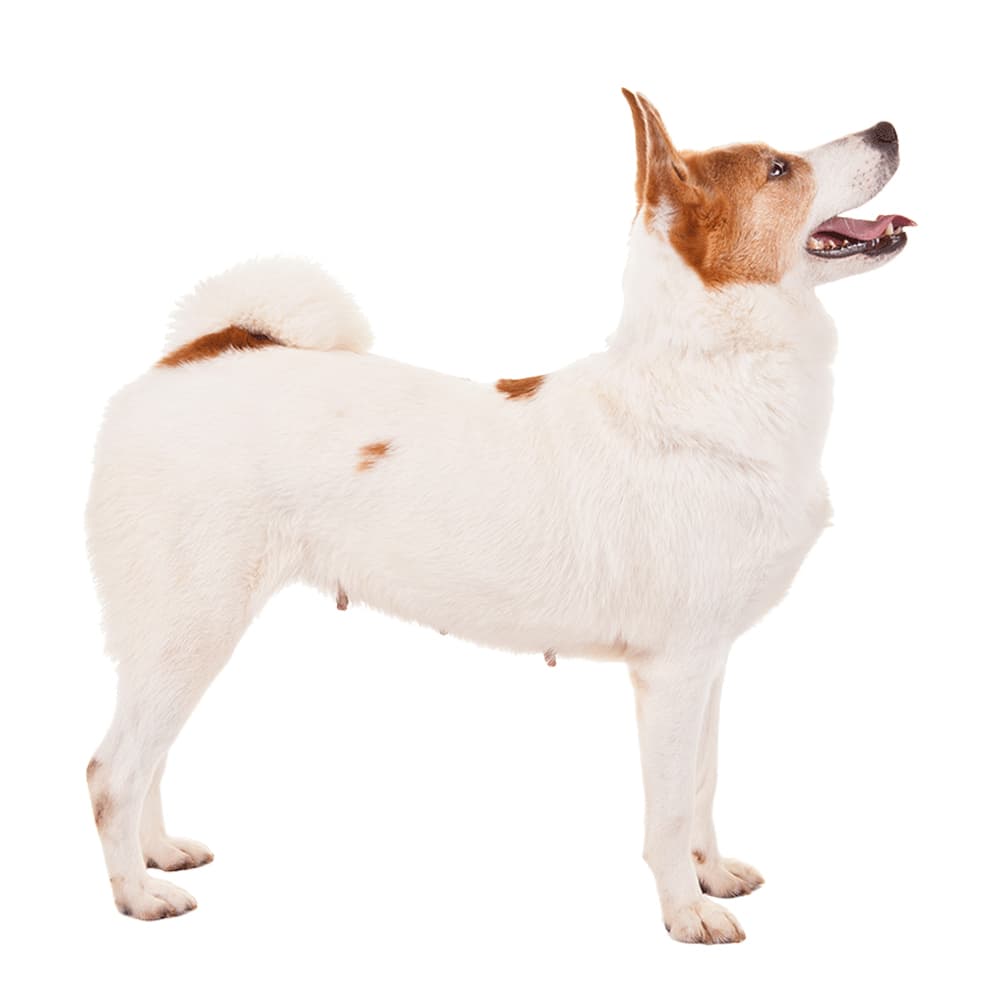Discover your dog's connection to this breed and 200+ others



Discover your dog's connection to this breed and 200+ others


The Norrbottenspets, also known as the Norrbottenspitz, Nordic Spitz, or Pohjanpystykorva, is a small-sized dog breed that originates from the Norrbotten, Lappland, and Västerbotten regions of northern Sweden and western Finland. This breed is primarily known for its use as a farm and hunting dog, characterized by its distinctive spitz-like appearance and lively, intelligent personality. The Norrbottenspets is an ancient breed, and though the specifics of its origins are not well-documented, it's generally believed to have been developed by the local Sami people, a nomadic tribe residing in the northern parts of Scandinavia, over hundreds, perhaps thousands, of years. Historically, the breed was used as a versatile working dog, particularly for hunting small game like squirrels and grouses, as well as for herding livestock. The breed almost went extinct in the early 20th century due to shifting societal changes and the decline of small farming, but enthusiasts were able to restore the population using dogs found in remote areas. The Swedish Kennel Club officially recognized the Norrbottenspets again in 1967.
Norrbottenspets are generally healthy, but can suffer from hip and elbow dysplasia, degenerative myelopathy, progressive rod-cone degeneration, and hyperuricosuria. Genetics research on cerebellar ataxia (progressive early-onset) and association with this breed is ongoing. As for all breeds, genetic screening is recommended to assist veterinarians with diagnosis and proactive care, as well as help breeders identify affected and carrier dogs.
The Norrbottenspets is known for its lively, alert, and intelligent personality. They are eager to please, making them relatively easy to train. Their hunting instincts are strong, so they can be independent and have a high prey drive. They typically get along well with other dogs and animals, but early socialization is always beneficial. Norrbottenspets are generally good with children and make excellent family pets.
A canine genetic lineage is a group of individuals or entire breeds that descended from common ancestors predating modern breed formation. Often these lineages are associated with a ‘type’ of dog with a unique historical working role and associated behaviors (e.g., herding, scent hunting, etc.).
Spitz and Sled Dogs originate in the Arctic and subarctic regions which caused them the develop adaptations to cold climates. Some of these adaptations give rise to characteristics of the lineage, most notably a dense double coat that helps with insulation. The lineage of these dogs can be followed back to ancient breeds developed by Indigenous people. These ancient breeds were used as an aid for transportation, herding, guarding, and hunting. These jobs have created dogs that are independent, intelligent and have strong work ethics as well as a sturdy body that helps them to pull sleds or go on long journeys over rough terrain.
Example breeds with ancestry from this lineage include Akita, Chow Chow, and Siberian Husky.
Despite their small size, Norrbottenspets are excellent hunting dogs and can even be used to hunt moose, thanks to their agility, endurance, and keen senses.
The breed's name is a combination of its origin, Norrbotten in Sweden, and the Swedish word "spets," meaning "point," likely referring to their pointy, erect ears.
The breed is sometimes referred to as "Norrbottenspitz" in English-speaking countries, as "spitz" is the English equivalent of the Swedish "spets," both meaning "point."
https://www.pawprintgenetics.com/products/breeds/276/
https://vgl.ucdavis.edu/breed/norrbottenspets?page=1
https://www.akc.org/dog-breeds/norrbottenspets/
https://www.fci.be/en/nomenclature/NORRBOTTENSPITZ-276.html
https://www.ukcdogs.com/norrbottenspetz
Recommended by top vets with decades of experience
21 breeds
64 genetic health markers
50 genetic trait markers
